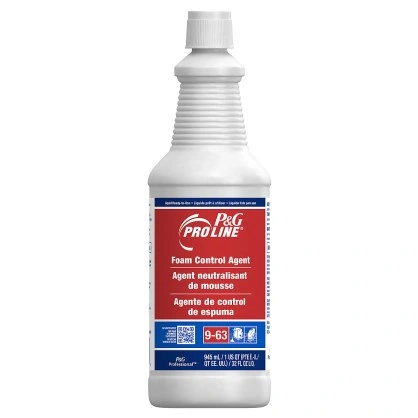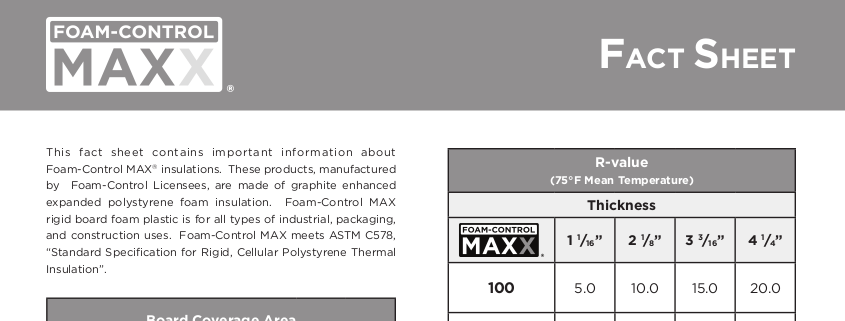Expert Tips on Implementing Foam Control in Chemical Handling Environments
The Role of Foam Control in Enhancing Product Quality and Performance
Foam control is an often-overlooked yet essential element in the quest of product top quality and functional efficiency throughout diverse sectors. This conversation will explore the complex impact of foam on both item integrity and manufacturing procedures, raising essential concerns about the methods that can be employed to enhance foam control.

Understanding Foam Development
Foam development is a complex phenomenon that can substantially affect item quality and functional efficiency across various sectors. Recognizing these variables is crucial for taking care of foam successfully.
The liquid's thickness and surface tension play essential duties in foam security. Surfactants, as an example, can reduce surface stress, promoting bubble development however likewise boosting foam stability, which can be problematic in particular applications. Mechanical agitation, temperature level changes, and the existence of impurities can aggravate foam generation, making it necessary to keep an eye on these aspects throughout production procedures.
Industries such as food and beverage, drugs, and chemical production need to be specifically watchful pertaining to foam control. By understanding the hidden systems of foam development, organizations can apply targeted approaches to alleviate its effects, thereby protecting operational effectiveness and making sure consistent product performance.
Effect On Product Top Quality
The presence of foam can dramatically jeopardize product quality across different industries. In producing procedures such as food and beverage, drugs, and cosmetics, too much foam can result in irregular product formulations. In food manufacturing, foam may catch air, impacting texture and taste, which can inevitably modify customer understanding and complete satisfaction.
Moreover, foam can prevent the uniformity of finishings and paints, leading to issues like bubbles and unequal coatings. In pharmaceutical applications, foam can hinder the accurate dosing of liquid drugs, possibly influencing therapeutic efficiency and patient safety. These quality problems not only diminish completion product's charm but can additionally bring about costly recalls and damage to brand name reputation.
Additionally, the visibility of foam can complicate top quality control actions, making it tough to achieve accurate dimensions and regular outcomes. Efficient foam control not just minimizes these risks but also improves general product top quality by guaranteeing that solutions satisfy strict sector criteria. By buying foam control techniques, companies can safeguard their products, improve consumer complete satisfaction, and keep an one-upmanship in the industry.
Operational Difficulties From Foam
Efficient operations in different markets can be seriously interfered with by the existence of foam, which presents numerous obstacles throughout manufacturing processes. Foam can prevent mixing and reaction times, hindering the performance of chemical procedures. In industries such as food and drink, foam development can lead to imprecise fill levels, resulting in product waste and inconsistencies in packaging.

In atmospheres where hygiene is vital, such as drugs and food handling, foam can make complex cleansing procedures, investigate this site creating concealed storage tanks for impurities. This not just increases high quality worries however likewise can bring about conformity issues with regulative criteria.
Furthermore, the psychological influence on operators can not be forgotten; extreme foam can produce a disorderly work setting, causing lowered morale and performance. In summary, resolving the operational challenges presented by foam is crucial to preserving performance and product high quality in numerous markets.
Strategies for Effective Foam Control
Exactly how can industries effectively mitigate the difficulties postured by foam? Effective foam control methods are essential for improving product top quality and operational efficiency.
In enhancement to chemical solutions, process optimization plays a vital role in foam monitoring. Industries can evaluate and change criteria such as blending speed, temperature, and pressure to minimize foam generation. Executing devices adjustments, like mounting foam-breaking devices or adjusting storage tank style, can additionally help decrease foam degrees.
Routine tracking and analysis of foam behavior within manufacturing procedures are likewise essential. Making use of advanced sensing units and analytics can provide real-time data, allowing for timely interventions and adjustments. Team training is just as vital; making certain that employees are knowledgeable concerning foam characteristics and control strategies can cause positive foam administration.
Study and Sector Applications
While lots of markets face unique obstacles associated with foam control, study expose that tailored strategies can significantly boost both item high quality and functional effectiveness. In the pharmaceutical industry, for example, a leading manufacturer applied More hints a custom-made foam control technique that reduced foam development during fermentation procedures. This technology not only improved return by 15% however also minimized contamination threats, making sure higher item integrity.
In a similar way, in the food and beverage industry, a major dairy products producer challenged excessive foam throughout pasteurization - Foam Control. By introducing a specialized antifoam representative, they decreased handling time by 20%, which straight translated to raised throughput and decreased power consumption. The application of foam control gauges ensured consistent item texture and taste, reinforcing brand commitment
In the chemical manufacturing market, a case research highlighted the successful application of foam control in wastewater treatment procedures. The execution of a real-time tracking system permitted operators to change antifoam dose dynamically, leading to a 30% decrease in chemical use and boosted effluent top quality.
These study illustrate the diverse applications of foam control throughout industries, highlighting its crucial function in boosting product quality and functional performance.
Conclusion
In conclusion, effective foam control is integral to enhancing item top quality and functional effectiveness across various sectors. Inevitably, prioritizing foam control contributes to improved performance, guarding brand name credibility, and enhancing customer complete satisfaction, highlighting its importance in high quality assurance within making procedures.
Foam control is an often-overlooked yet important component in the search of product high quality and operational efficiency throughout diverse industries. Personnel training is equally vital; making certain that employees are educated regarding foam dynamics and control methods can lead to proactive our website foam monitoring.
While lots of industries encounter unique challenges related to foam control, instance studies disclose that tailored strategies can substantially enhance both item quality and functional efficiency (Foam Control). In the pharmaceutical market, for instance, a leading maker implemented a customized foam control approach that decreased foam development during fermentation processes.In verdict, effective foam control is important to enhancing product quality and functional efficiency across different sectors